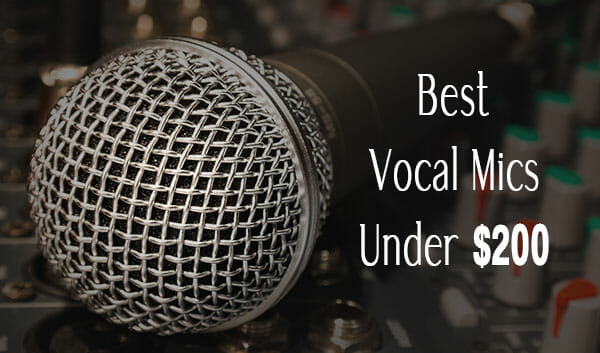
When we think of buying any professional equipment, whether it’s for filming videos or music, we think that it’s going to be too hard on our pockets.
I mean, think about it. For most beginners, investing in equipment is important but how do you buy anything so expensive; when you’ve barely started earning?
I bring the good news. There are some really affordable vocal mics available (all under $200), that are good quality.
You don’t have to jump into buying the most expensive ones; just yet.
Whether it’s for your first YouTube cover or your live performance, owning equipment (especially good quality vocal mics) is important.
It helps you practice at home, without the stress of finding a studio, and of course, familiarizes you with the mic.
Even for people who are currently learning sound designing should own equipment of their own. There’s nothing more daunting than figuring out the settings of pro tools if you don’t understand your equipment.
Now, let’s check out the 9 best vocal mics under $200 of 2025.
Table of Contents
- Our Top Picks
- 1. Shure SM58
- 2. Blue Yeti USB Mic
- 3. Rode NT1A WITH USB
- 4. Audio-Technica AT2020 Vocal Cardioid Mic
- 5. Sennheiser E835 Dynamic Cardioid Vocal Microphone
- 6. Mxl 770 Vocal Cardioid Microphone
- 7. Blue Spark SL
- 8. Sennheiser e906
- 9. AKG Perception 120
Our Top Picks
- Best Budget Vocal Mic: Shure SM58
Someone said affordable mic? That’s a ‘Shure’ winner. Great mic for vocals! - Best Vocals Mic: Blue Yeti USB Mic
A hassle-free mic with no need for an insane amount of instructions; to get it working. - Best Acoustic Mic: Rode NT1A WITH USB
Say bye-bye to the plosives and unnecessary sounds. Rode NT1A is as clear as it gets. - Best Affordable (Close to High End) Mic: Audio-Technica AT2020 Vocal Cardioid Mic
Quality comes first with mics. This is one of the best affordable, high quality mics in the market. - Best Vocals Mic (Runner Up): Sennheiser E835 Dynamic Cardioid Vocal Microphone
Are you singing till your heart’s content? Sennheiser E835 is addictive. It’s clear and crisp. You won’t stop practising; because you’ll love the way you sound! - Perfect Vocal Mic: Mxl 770 Vocal Cardioid Microphone
Got instruments to go with your vocals? Mxl 770 Vocal Cardioid Microphone has got your back. Don’t stress about how you’re going to be heard; along with the instrument. This mic knows what it’s doing. - Best All Rounder Mic: Blue Spark SL
A round of applause for this one. It’s the real deal. It completely reduces distortion in the vocals. Makes the instruments sound so good in a live set up. Set the mic according to your needs. - Best Jazz Mic: Sennheiser e906
Hey you, professional musician! Here’s a mic that does both it’s jobs right. Take it to the studio or use it in a live set-up. It’s perfect. - Best SPL Mic: AKG Perception 120
Don’t worry about selling an organ to buy a good mic that helps you regulate the SPL! AKG Perception 120 is the one for you!
Top Reviews of Vocal Mics Under $200 In 2025
1. Shure SM58
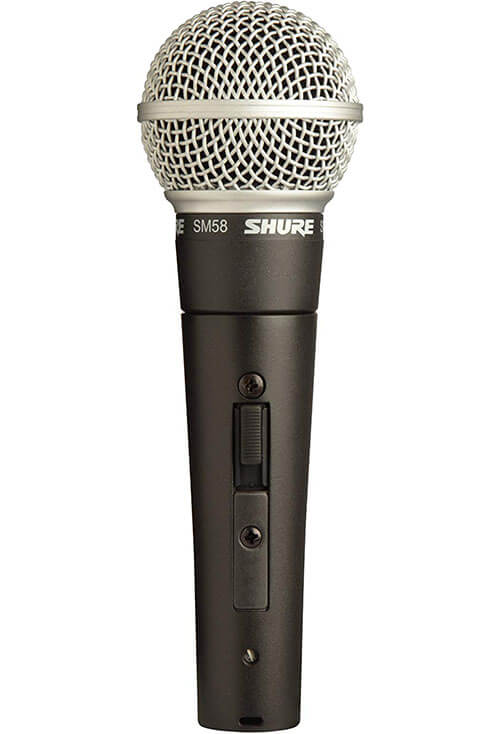
Now, for every beginner out there, this is an affordable mic that gives you amazing quality. If you’re looking to place the mic near your guitar or drums, it will pick up the sound pretty well.
This mic is also called Beta 58. It is the most common handheld dynamic mic (scroll down to understand the difference between Dynamic and Condenser mic) for vocals.
What I mean by handheld is literally, held in your hand.
This is the mic mostly used for live performances. It is for shure (terrible pun).
It is of the good quality mics out there, that is affordable.
Shure SM58 mics have a small diaphragm. What this means is that they pick up on the small incoming sound waves very easily.
That’s why you can always hear the singer breathe; when they’re using this mic. It is a unidirectional cardioid mic. This means that the mic will pick up sound only from one direction.
This mic also gets rid of background noise. So, even though you can hear minute details when close to the mic, like breathing, the mic will not pick up on noises produced around you.
Some more technical details:
Its frequency response ranges from 50 to 15000Hz. That’s a pretty good range.
It has a sensitivity pattern of -54.5dBV/Pa.
Pros
- Dynamic mics are super rugged. They don’t break that easily.
- They can withstand a very high sound pressure level (SPL).
- Gets rid of most of the background noise.
- Delivers clear results. The recording won’t be distorted or unclear.
- Affordable!
Cons
- They are less sensitive to sound.
This is the first mic that I purchased. When I first decided to get a mic, I imagined a burnt hole through my pocket. To my surprise, it wasn’t the case. This mic stayed with me for too long. It’s so durable. The on/off button is so convenient to have in a mic. So, while practicing, I was in control of when I wanted the mic on or off. I have also used this mic with instruments. My guitar sounds pretty incredible when picked up by the Shure SM58.
2. Blue Yeti USB Mic
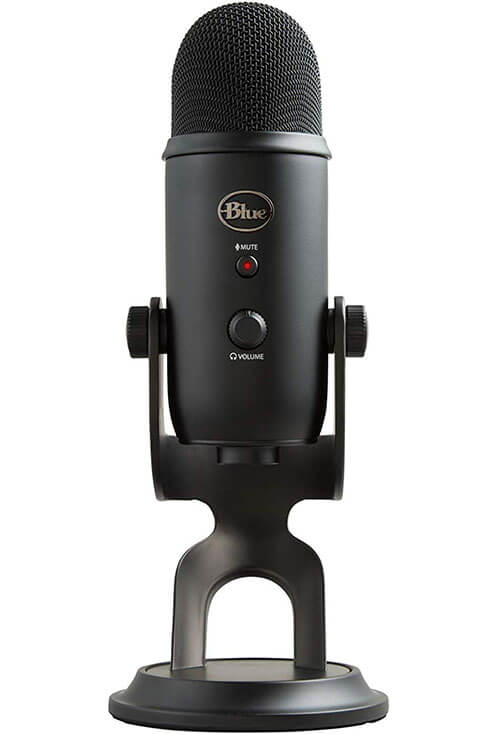
For beginners, looking to start their own Youtube channel from their houses, you guys, this is the mic you should buy.
This is perhaps the most commonly used mic. Today’s world is so technology savvy, it’s incredible. This mic comes with a USB that you can use directly with your PC/laptop and viola! It’s that easy.
This mic is used to record vocals. Like I said, if you’re going to start your YouTube singing channel, this one’s for you. It is even used for podcasts, skype calls and streaming. Cool, right?
The Blue Yeti is a condenser mic. It is more sensitive to high frequencies. The diaphragm is pretty thin so it’s a little more susceptible to tearing; when compared to a dynamic microphone.
The mic can work with four patterns of receiving sound. It’s a cardioid mic (picking sound from the front). It’s also unidirectional. It’s also bi-direction (sound picked up from 2 sides, that is, front and back) and it’s also omnidirectional (sound picked up from all sides). It’s so many things.
The cardioid feature is best for vocals!
If you’re looking to use this for sound designing purposes, this mic can get both left and right channels to work, making it one of the best mics for stereo mode.
The range of frequency lies from 20 Hz to 20,000 Hz. That’s pretty much what you need to pick up the lowest to the highest frequency for singing or podcasts etc.
Pros
- The ease of having a USB to connect.
- Sensitive to high and low frequencies.
- Super user-friendly.
- Comes in 11 colours.
- 4 pattern of receiving sound waves.
- Comes with a shock mount (required for condenser mics)
- Tri-capsule array (can record in any situation).
Cons
- Not that durable.
To be very honest, it’s because it took me 2 minutes to set up the mic at home. It was that easy because of the USB cable. When I decided to start recording music at home, the Blue Yeti was my first pick. It came with a shock mount! All I had to do is place it on my table and connect it to my laptop.
3. Rode NT1A WITH USB
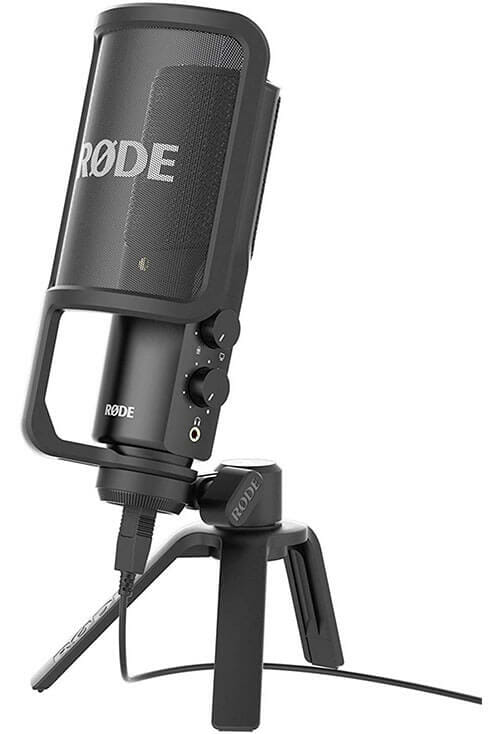
Here’s yet another rad condenser mic. The Rode NT1A comes with a USB cable. Ah, the convenience.
Rode has been a very trustable brand when it comes to mics.
It is a really good quality mic and here’s why:
Rode NT1A is good with voice recording. Vocalists, this is something you should look into. Like the Blue Yeti, it can be used for podcasts and even instrument recording. So if you have a guitar that is accompanying you while you sing, this mic will pick up both pretty clearly.
It is a large-diaphragm condenser mic which makes it sensitive to all frequencies. It has a larger surface area to perform that function. This mic can be used for something that has lows, mids and highs. The mic itself produces very little of its own noise (5dB). It’s a cool feature because it gets rid of unnecessary sound that the mic produces itself.
Pros
- Amazing sound quality.
- Very sensitive to sound (can be a con).
- Comes with a USB.
- Gets rid of plosives (the necessary P’s and B’s picked up by the mic).
- Comes with a stand.
Cons
- Very sensitive to high frequencies.
- Delicate and not rugged like a dynamic mic.
It seriously gets rid of plosives. In a way that you sound like the most eloquent speaker. Even as a rapper, this is something you should look into. When it comes to beat-boxing or rapping, it’s so important to not have jarring sounds (especially the P’s and B’s). Not just that, it’s super good with acoustic vocals and acoustic guitars. Plus it comes with a USB. By now you can tell that I love convenience.
4. Audio-Technica AT2020 Vocal Cardioid Mic
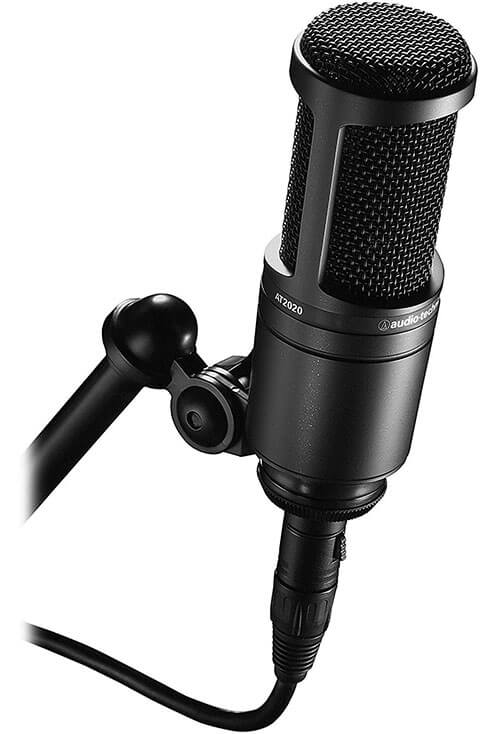
Commonly referred to as AT2020, this one is highly appreciated. Every user so far has had almost no problems with this mic, making it widely used.
We already know the features of a condenser microphone. If you’re still confused, you can scroll down and go through the difference. Now, a condenser mic is super sensitive to frequencies, making it an ideal choice for recording vocals, podcasts and instruments too. The instruments could be guitars or even drums.
It also comes to great use for home recording and for streaming purposes as well.
It is a cardioid mic. This means that its pick up pattern captures sound only from the front. This is a feature best for vocal recording and studio recording.
Its frequency response lies between 20Hz to 20,000 Hz.
It also has a large gold-plated diaphragm. Gold is used because it doesn’t corrode easily.
Self-noise of the mic is 5dB, much like the Rode NT1A.
Pros
- It’s a quiet mic. Doesn’t produce its own noise.
- Can work for vocals, acoustic instruments like the guitar and drums and piano.
- Affordable. That’s what we’re all looking for.
- A durable condenser mic.
- Super smooth (especially for reflecting vocals).
Cons
- Can cause sibilance (S’s sounds can be heard).
- Highly sensitive (adding to the above).
- Does not come with a pop filter (but requires one).
It’s pretty cheap for a mic that provides that kind of quality. It’s one of the few durable condenser mics. It provides a warm and crisp sound. It is ideal for both projects that you do at home as well as studio projects.
5. Sennheiser E835 Dynamic Cardioid Vocal Microphone

Most of us remember Sennheiser as a brand that made amazing headphones. Guess what, they also make amazing mics!
It is a dynamic cardioid. This mic can withstand a very high sound pressure level (SPL) and is unidirectional, making it perfect for vocals.
This is again, a more live performance kind of mic. The sound quality is amazing. It has clarity and helps with a projection of voice.
A lot of anchors and emcees use this mic for the very purpose of projection.
The frequency response ranges from 40 to 16000Hz.
This mic does not allow unnecessary noise to seep through. This is because it has a shock mount system.
Sennheiser E835 can record up to 140 dB and can be used on drums. They are very transparent in sound. Crisp and clear!
Pros
- The mic is rugged and sturdy.
- Amazing for a live setup.
- The frequency response is very good.
- Prevents picking up unnecessary noise.
- Affordable!
Cons
May cause a delay.
(Delay is an effect that is used to achieve the repetition of a sound source).
It’s the perfect live music mic! If it can withstand high SPL in the sound emitted, there’s nothing else you need. It’s clear, durable and affordable. That’s why I give it the runners up award for ‘Best Vocals Mic’.
6. Mxl 770 Vocal Cardioid Microphone
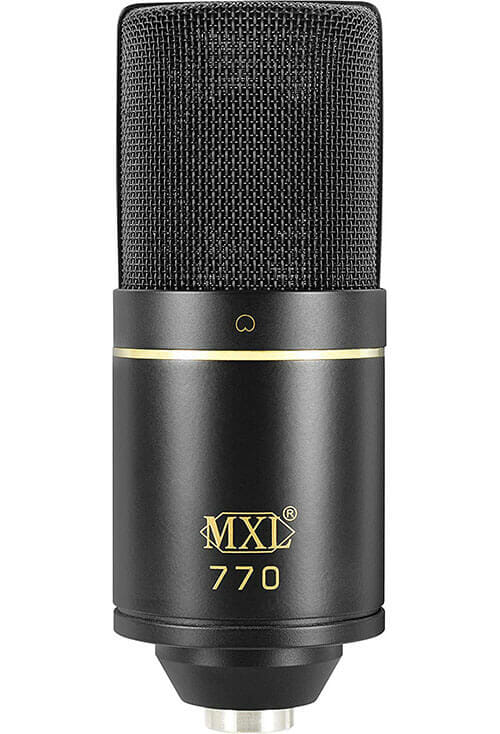
Since it’s a cardioid mic, picking up sound only from the front, it will ignore the sounds/noise around the mic. At least, to its best.
The Mxl 770 as the name suggests, is a perfect vocal mic.
It is a small diaphragm condenser mic.
It is used to capture sound sources that have more highs in them than lows (because these mics are more sensitive to high frequencies).
Apart from vocals, they can also be used to record strings like acoustic guitar and even the flute.
The frequency response ranges from 30 Hz to 20,000 Hz. Don’t forget that all condenser microphones require a phantom power of 48V to work.
Pros
- Tries to erase as much background noise.
- Incredible price with great sound quality.
- Comes with a shock mount system.
- Can be used to record both vocals and instruments.
Cons
- Not too rugged. Careful while handling the mic.
- Does not come with a pop filter.
The Mxl 770 has an incredible sound quality with amazing high-end clarity. This mic is more than what you bargained for!
With its price so low and quality so high, it’s a win-win for every vocalist and instrumentalist.
7. Blue Spark SL
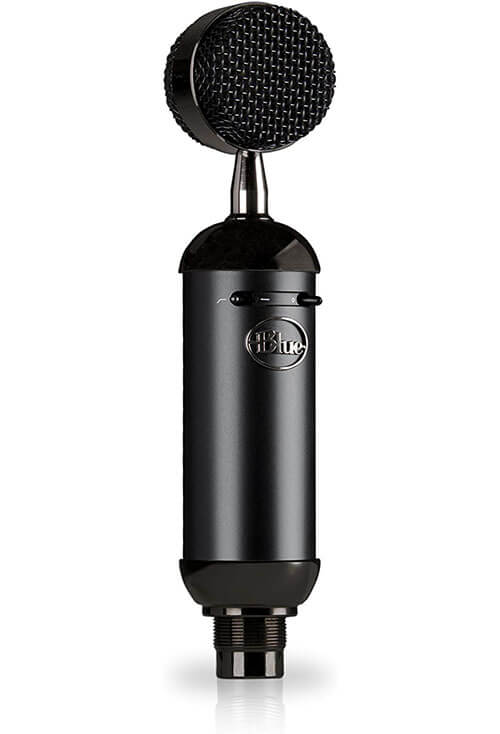
The Blue Spark SL is yet another brilliant condenser mic. This microphone is a large-diaphragm condenser mic.
What this means is that it is very sensitive to sound and cannot withstand high sound pressure level (SPL).
This mic can be used to detect the 3 frequency bands: lows, mids and highs. Lows are anything below 300 Hz. Mids range from 300 to 900 Hz and highs range from 150 Hz to 300 Hz. That’s a pretty cool feature.
Lows give body/oomph to your sound. Mids add definition and roundness. Highs add presence and pronunciation.
The Blue Spark SL uses the JFET or junction field-effect transistor. It’s a type of circuit. What does this mean? It’s a voltage-controlled device. The JFET offers an advantage, it basically helps with giving the best kind of output when it receives low noise.
So there’s less distortion in the output and produces high-quality sound.
It has a gold-plated large condenser diaphragm.
It is a cardioid mic, meaning it receives sound signals only from its front.
Pros
- Can record vocals, instruments, pro recording and streaming.
- Comes with a pop filter and XLR cable.
- It has a toggle switch that activates a low-cut filter.
- Gives out a high-quality sound.
Cons
- Creates sibilance (S’s are heard prominently while speaking or singing).
- Can’t be used with an electric guitar.
There are no rumbling sounds with this mic. Plus, it has a toggle switch. That was a pretty sweet feature to have, according to me. Looking to start a YouTube channel? The Blue spark SL is a good choice!
8. Sennheiser e906
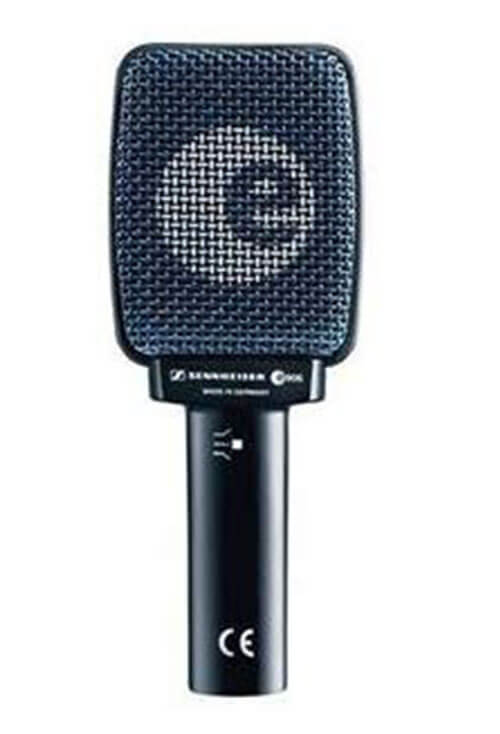
Looking for a good dynamic mic? Here’s one for you.
Now this mic is super adaptable to your needs. Here’s how:
The mic can offer a feature where you can change the effect of your sound from bright to moderate to dark.
It provides amazing tonal balance. It keeps the bass just right, doesn’t let the highs accentuate too much and gives enough mids to have a body. And all of that comes under $200.
The Sennheiser e906 can be used both on stage as well in a studio.
Since it’s a dynamic mic, it allows you to record vocals, podcasts, streaming but also instruments like drums, guitar and keys and guitar amps.
It’s super durable so don’t freak out if you drop the mic. Even if it’s after a cool riff-off.
The Sennheiser e906 is a super-cardioid. The feature is more or less the same as a cardioid mic but picks up sounds from the front; and a little bit from the back.
This mc can be used anywhere and does not require one single isolates sound to be captured.
Pros
- The shape of the mic is flat. Can be placed anywhere with ease.
- It’s a rugged mic.
- It doesn’t require any additional power supply (like most condenser mics.
- Comes with a carrying pouch.
- Comes with an amp mic stand and cable.
- It’s super light to carry around.
Cons
- Can’t record all kinds of sounds.
I really happen to like the fact that you can change the settings of this mic. You can make the sound go bright, moderate and dark. Which is why a lot of Jazz singers prefer this mic. Another reason why I chose this mic is because of its shape. You can literally place this mic anywhere and it will pick up the sound.
Looking for a mic that you can place anywhere with amazing quality?
9. AKG Perception 120
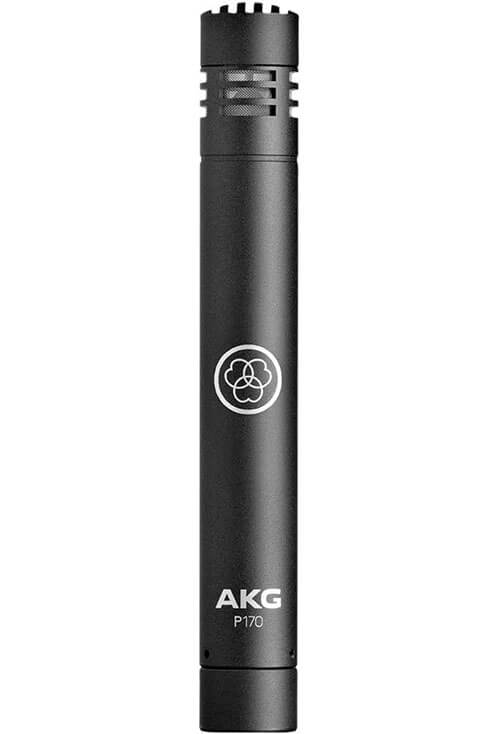
I have been mentioning that some mics cannot withstand high SPL or sound pressure level. Well, this one can.
The AKG Perception 120 can change its SPL. That’s a rad feature to have for under 200 dollars.
The frequency response ranges from 20 Hz to 20,000 Hz.
AKG P120 has a cardioid pattern. As you can tell, it’s the most common polar pattern. It picks up sound only from the front.
So vocals, instruments like the strings, drums and even really tiny sounds like footsteps walking away. That’s how cool this mic is.
This mic also has another brilliant feature. It has a switchable attenuation pad. What this does is, it allows you to increase your Max SPL from 130dB to 150 dB.
Now, mics that allow you to do so are usually; super expensive. The AKG P120 is one of the few mics that provide this kind of quality for a price that’s kind of unbelievable.
This mic also cuts some frequencies from the bass to avoid unwanted, rumbling sounds.
The AKG P120 is a condenser microphone, so it does require a phantom power of 48V.
Pros
- Can be used to record vocals and heavy instruments like drums.
- Pretty durable.
- The super cool switchable SPL feature.
- An amazing mic for beginners.
Cons
- Can produce some sibilance. (Prominent S sounds while singing or recording etc).
It is a high performance mic. Look at all its features! And for the price that you get this (well below $200), it’s incredible.
It’s a smart buy for beginners because you will never have to get rid of this one or buy new mics. You can use this at any stage. Also, the shape of the mic is really cool. It’s like holding a long pencil.
Difference Between Dynamic Mics And Condenser Mics
For your reference, here are some key characteristics of dynamic mics and condenser mics. Hope this helps you understand the concept better.
Dynamic Microphones
Characteristics of Dynamic Microphones:
- They are very rugged
- They can withstand a very high sound pressure level (SPL). Can record up to 140 dB and is used on drums.
- They are very transparent in sound.
- They are used in live sound also because they are cheap.
- They are less sensitive to sound.
Some examples of popular Dynamic Mics:
- Shure SM58: most common dynamic microphone.
- Shure SM57
- Telefunken M80
- Telefunken M81
- Beyerdynamic TGD71C
- Beyerdynamic TGD35C
- Sennheiser E906: more for guitars and louder instruments.
- Sennheiser E609: more for guitars and louder instruments.
- Sennheiser E602
Condenser Microphones
Characteristics of Condenser Microphones:
- They are very sensitive to sound and cannot withstand a high sound pressure level.
- They are more sensitive to high frequencies.
- They are very delicate and you can tear the diaphragm very easily.
- To place it, a shock mount is used because they are very sensitive to vibrations. It prevents the microphone from picking up unnecessary vibrations.
Some examples of Condenser Microphones:
- Sennheiser E614: SD
- Shure SM81: SD
- Telefunken AK47: LD
- Blue Spark: LD
- Neumann U87
- Neumann U47: LD
- Rode NT1A: LD
- Line Audio CM3: SD
FAQs About Vocal Mics Under $200
What is a microphone?
It’s a very basic question but microphones need to be understood well. Microphone is a transducer, converts one form of energy to another form. Through the microphone, it gets converted into electrical energy.
What’s a pop filter?
An accessory that filters air burst while pronouncing plosives.
What are polar patterns?
The angle or directions in which microphones pick up sound is called polar patterns.
There are four kinds of polar patterns-
Cardioid: The most common polar pattern. Picks up sound only from the front. (takes the shape of mushroom). Example – Vocals, Footsteps etc.
HyperCardioid: Exactly like the cardioid microphone but picks up a little sound from the back. Used anywhere. That does not require one single isolated sound to be captured.
Bi-directional: Picks up sound from two opposite sides. (Front and Back or Left and Right) Is also called a figure 8 pick up pattern. Picks up sound in the shape of an infinity sign. Picks up sound from the front and the back, left or right equally. Examples – movies where two people are arguing, podcasts, radio, basic sound of a room. Can only pick up sound from opposite directions because the diaphragm is flat.
Omnidirectional: Picks up sound from all sides. (Front, back, left, right, bottom, top etc.) They’re shaped differently. Used mainly in kickdrums, used inside a bass drum, used in grand pianos. Theatre performances, tap dancers, conferences. Examples – Shure Beta 91A, BeyerDynamic TGD71C, AKG C414 one of the few microphones which has all four polar patterns in one microphone. You can choose your polar pattern.
What are the things to keep in mind while recording or before recording?
Space has to be quiet.
Make sure you use the right microphone to record the sound source.
As few people in the room as possible.
Select your microphone carefully based on the polar pattern.
What is the audio frequency spectrum?
Frequency range of hearing of the human ear is 20 Hertz – 20,000 Hertz.
This is what defines the bass, mids and treble. These three make up the frequency spectrum of the human ear.
Three main frequency bands in the frequency spectrum are-
Lows – Anything below 300 Hertz
Mids – 300 – 900 Hertz
Highs – 900 Hertz – 20,000 Hertz
Further divided frequency bands- LOW-
Lowes – 20 Hertz – 150 Hertz
Low Mids – 150 Hertz – 300 Hertz
MIDS-
Mids – 300 Hertz – 750 Hertz
High Mids – 750 Hertz – 4,000 Hertz
Lows are frequencies that you can feel, highs are annoying sounds to your ear and mids make it sound hollow or boxy.
Lows have a lesser frequency band, highs have a wider frequency bands.
What accessories to buy with my mic?
Shock Mounts:
These help reduce noise that are caused due to the mounting hardware. Even while your mics are kept on a wooden stage, or on a stand, there is transferable mechanical sound, which the shock mount will prevent.
Windscreens:
Controls the wind movement from interfering with your sound. Prevents the pop sound during close vocal use.
Phantom Power:
Used by condenser microphones. You need to send this power to get your microphone to work.
Conclusion
Found what you were looking for?
These features that I’ve mentioned above are some of the features you should always keep in mind; before buying equipment like mics. These sure are the cheaper options and super good for beginners and professionals as well. Don’t kill your dream of becoming a singer or helping a cool band with sound designing!

